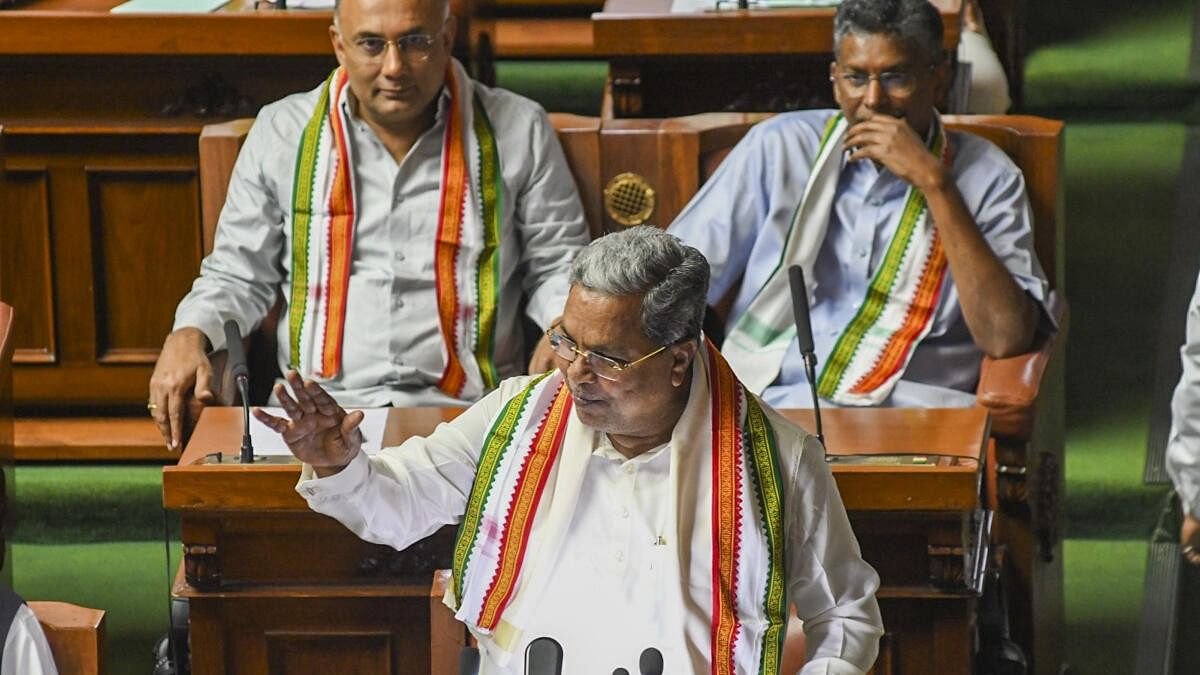
Karnataka Chief Minister Siddaramaiah presents the State Budget 2024-25 in the Assembly, in Bengaluru.
Credit: PTI Photo
Bengaluru: After the power crisis Karnataka witnessed this year owing to poor rains, the government has decided to increase the power production capacity of the state.
In the state budget presented on Friday, Chief Minister Siddaramaiah said that the government aims to increase the installed capacity from 32,000 Megawatts to 60,000 Megawatts in the next seven years.
The budget also focussed on increasing the use of renewable energy in the agricultural sector and announced plans to install 40,000 off-grid solar pump sets. That apart, under the agricultural pumpset feeder solarisation scheme Phase-I 1,320 MW of energy is being produced in a decentralised manner to benefit 3.37 lakh farmers.
In the next phase, the government now plans to implement 1,192 MW of solar projects to power up 4.30 lakh irrigation pumpsets. Planning to tap into the advantages of the Green Hydrogen technology, a 300 kw capacity self-sustained Green hydrogen plant will be installed by KREDL on a pilot basis. This could be set up utilising the Rs 10 crore fund allotted by the Ministry of New and Renewable Energy (MNRE). The state will also have a dedicated new Green Hydrogen Policy.
To produce renewable energy on a large scale and to transmit it to load centres, the government is also aiming to establish Ultra High Voltage (UHV) transmission lines of 765 kV by KPTCL.
To avoid scheduled and prolonged electricity outages during maintenance of transmission lines, mobile or vehicle-mounted 66 kV and 110 kV sub-stations will be purchased by KPTCL. To cater to the growing energy requirements of Bengaluru and surrounding areas, sub-stations will be upgraded under the Public Private Partnership.
To promote the use of Electric Vehicles, the State will also set up 2,500 Electric Vehicle charging stations under Public Private Partnership and another 100 charging centres will be set up through power supply companies at a cost of Rs 35 crore.